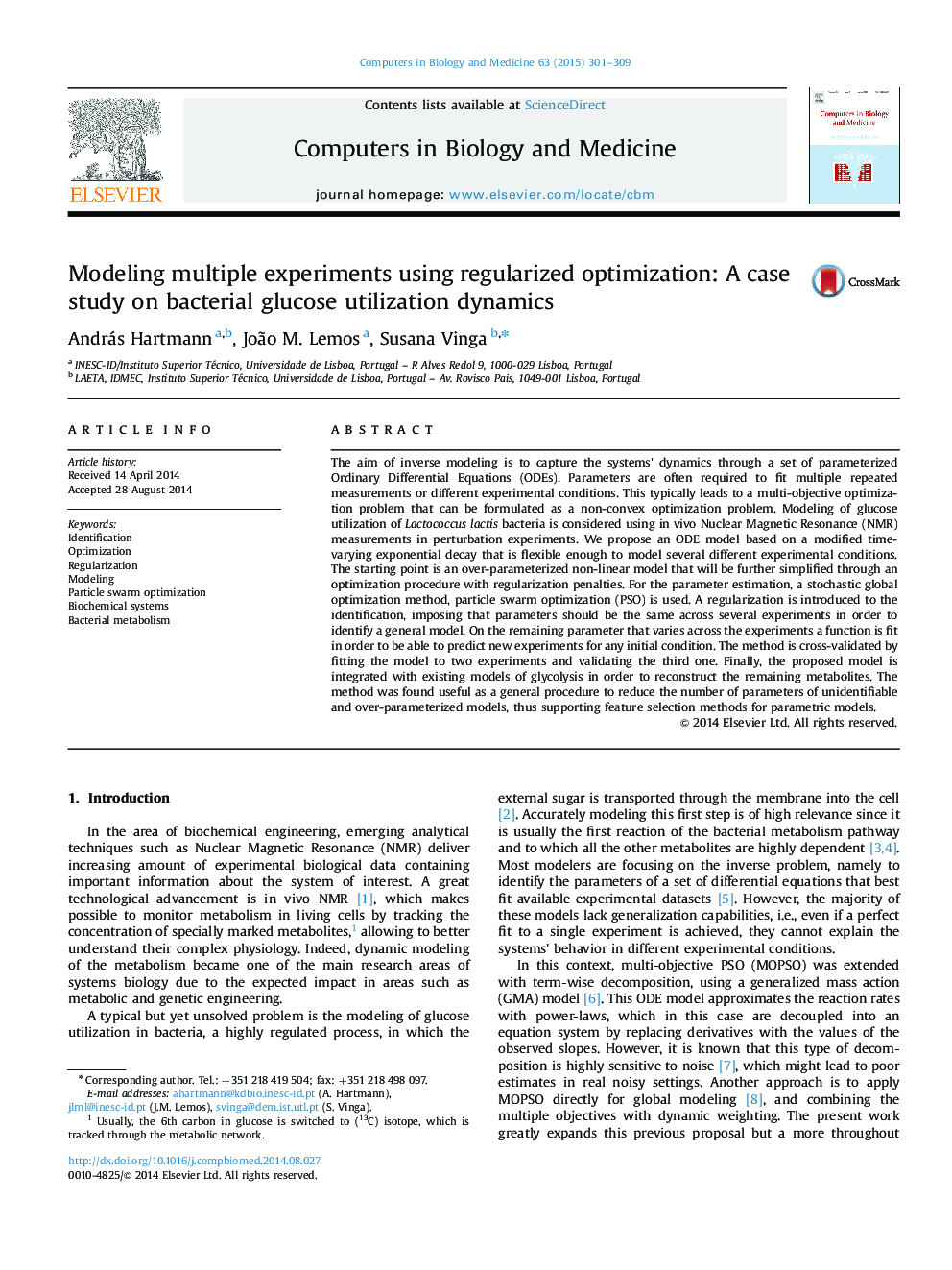| Article ID | Journal | Published Year | Pages | File Type |
|---|---|---|---|---|
| 505212 | Computers in Biology and Medicine | 2015 | 9 Pages |
•A global model for glucose utilization is proposed based on time-varying parameters.•Optimization with regularization allows identifying global models across experiments.•Local and global parameters can be identified using particle swarm optimization.•Results are validated by predicting new conditions and through model integration.
The aim of inverse modeling is to capture the systems׳ dynamics through a set of parameterized Ordinary Differential Equations (ODEs). Parameters are often required to fit multiple repeated measurements or different experimental conditions. This typically leads to a multi-objective optimization problem that can be formulated as a non-convex optimization problem. Modeling of glucose utilization of Lactococcus lactis bacteria is considered using in vivo Nuclear Magnetic Resonance (NMR) measurements in perturbation experiments. We propose an ODE model based on a modified time-varying exponential decay that is flexible enough to model several different experimental conditions. The starting point is an over-parameterized non-linear model that will be further simplified through an optimization procedure with regularization penalties. For the parameter estimation, a stochastic global optimization method, particle swarm optimization (PSO) is used. A regularization is introduced to the identification, imposing that parameters should be the same across several experiments in order to identify a general model. On the remaining parameter that varies across the experiments a function is fit in order to be able to predict new experiments for any initial condition. The method is cross-validated by fitting the model to two experiments and validating the third one. Finally, the proposed model is integrated with existing models of glycolysis in order to reconstruct the remaining metabolites. The method was found useful as a general procedure to reduce the number of parameters of unidentifiable and over-parameterized models, thus supporting feature selection methods for parametric models.
